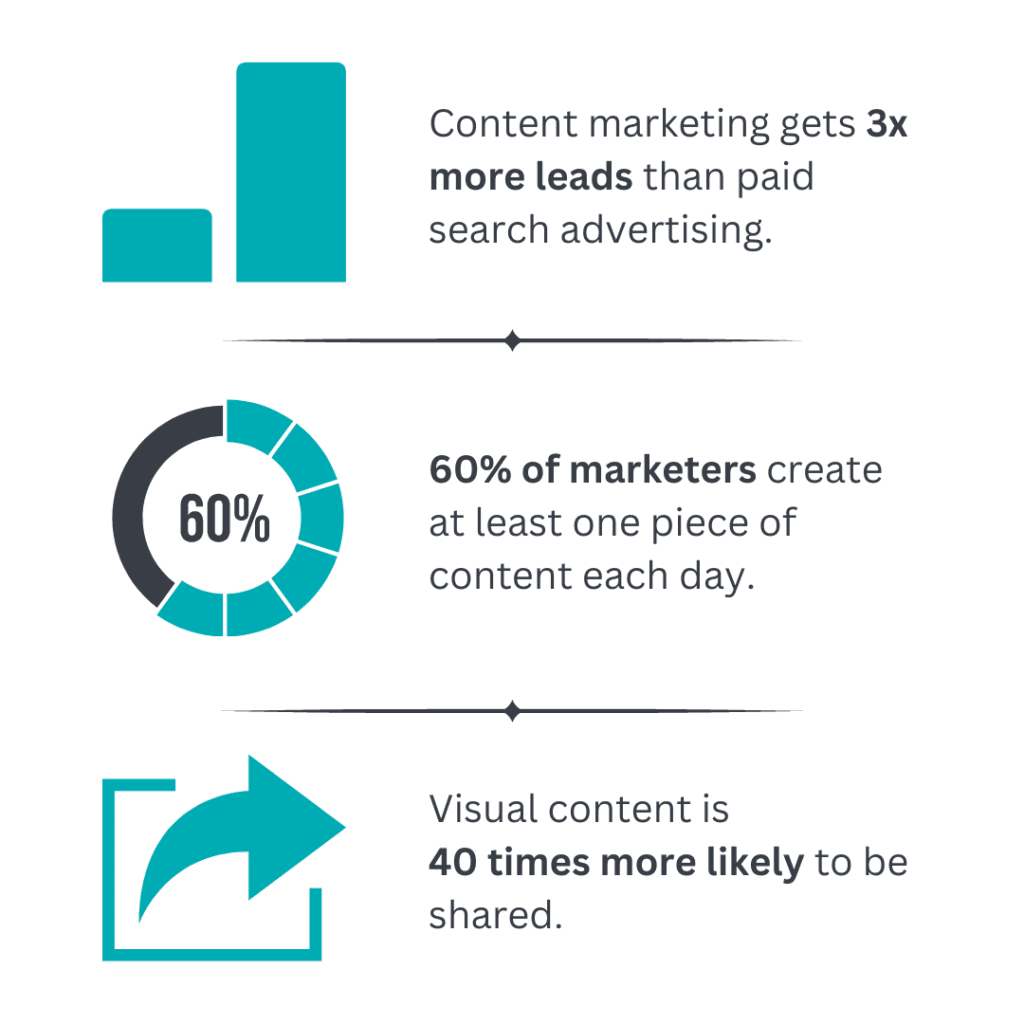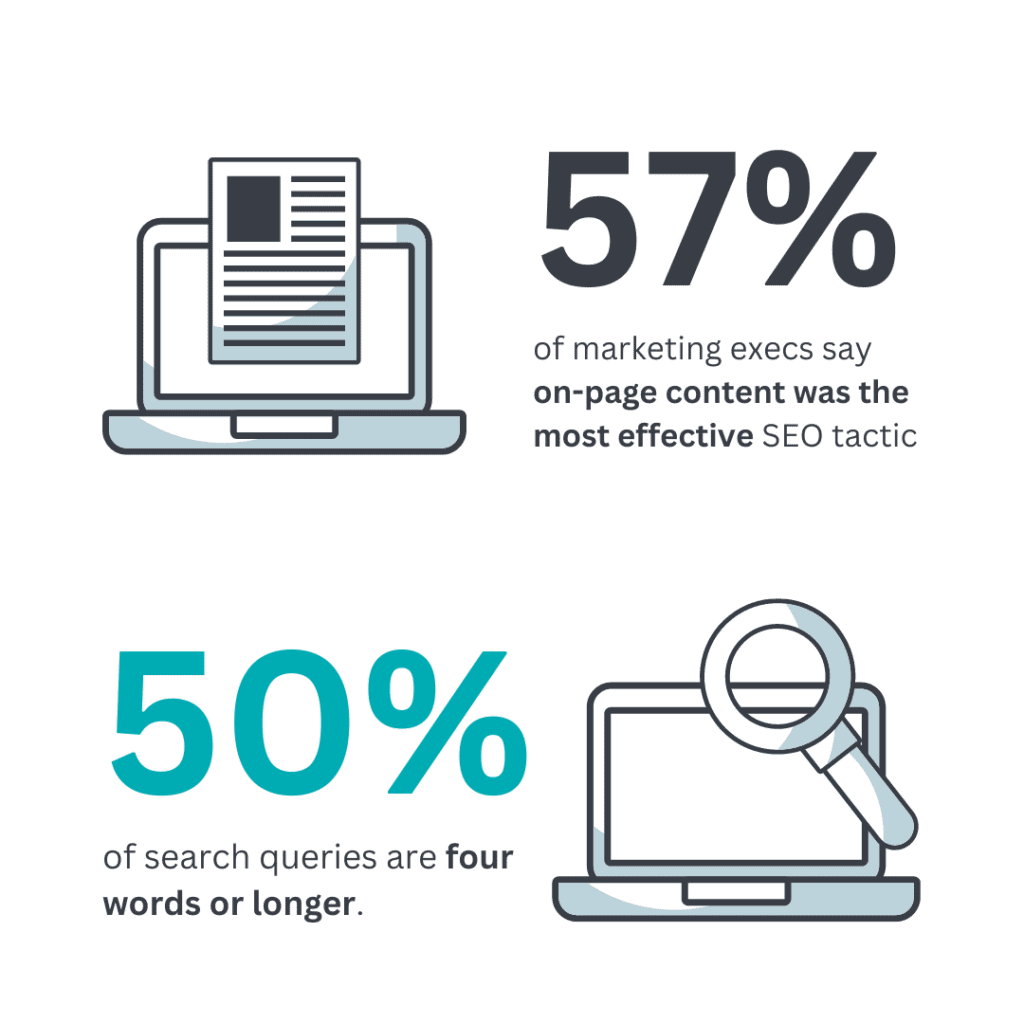The modern consumer seeks knowledge, assurance, and a sense of connection before making a decision. This shift underscores the importance of a robust content strategy tailored specifically for the HVAC industry.
Why does this matter now? As competition intensifies, businesses that fail to adapt risk being overshadowed by those that harness the power of content to engage, educate, and convert their audience.
A well-crafted content strategy positions an HVAC business as a thought leader and builds trust, fostering lasting customer relationships.
Looking ahead, the HVAC industry is poised for innovation and growth.
As sustainability, energy efficiency, and smart home integrations become central to consumer demands, the need for businesses to communicate their value propositions, expertise, and unique selling points through content becomes even more critical.
Investing in a tailored HVAC content strategy today is not just about meeting current needs—it’s about future-proofing your business, ensuring its relevance, and driving its success in the years to come.
Understanding Your Audience for Effective Content
Generic content often fades into the background. To truly stand out and make an impact, HVAC businesses must craft content that resonates deeply with their audience.
This begins with an understanding of who they are so you can:
- Address their needs
- Answer their unique questions
- Offer solutions tailored to their challenges
This positions your business as a trusted resource and fosters a stronger connection with potential customers.
Segment your audience
The HVAC industry caters to a diverse clientele, each with distinct needs and preferences. For instance:
- Homeowners might be interested in energy-saving HVAC solutions, seasonal maintenance tips, or understanding the benefits of upgrading their systems.
- Commercial clients often prioritize efficiency, long-term cost savings, and scalable solutions for their expansive spaces.
By segmenting your audience, you can create content that speaks directly to each group’s unique interests and concerns, ensuring higher engagement and relevance.
Create audience personas for targeted content creation
Audience personas are fictional, detailed representations of your ideal customers.
They encompass demographics, behavior patterns, motivations, and goals. For the HVAC industry, this could mean:
- Eco-conscious Emma: A homeowner in her 30s, looking for sustainable HVAC solutions to reduce her carbon footprint.
- Businessman Bob: Owns a chain of restaurants and needs reliable HVAC systems that offer efficiency and durability.
By developing such personas, HVAC businesses can craft content that feels personalized, making their audience feel seen and understood. This targeted approach not only enhances user experience but also boosts content effectiveness.

Setting Clear Content Marketing Goals
Content is not just words on a page; it’s a strategic tool that can propel HVAC businesses toward their objectives.
Whether building brand recognition, educating potential customers, or driving sales, content plays a pivotal role. Content can position an HVAC business as a trusted industry leader by delivering valuable insights, answering pressing questions, and showcasing expertise.
Set content goals like awareness, lead generation, or customer retention
Every HVAC business has unique objectives, but some common goals that content can help achieve include:
- Brand Awareness: Crafting informative and engaging content can elevate a brand’s visibility, making it a go-to source for HVAC insights.
- Lead Generation: Through educational blogs, how-to guides, and case studies, businesses can attract potential customers and capture their details for future marketing efforts.
- Customer Retention: By continuously offering value through content, businesses can nurture existing relationships, ensuring customers remain loyal.
Key performance indicators to measure success for HVAC content
Businesses need to track specific KPIs to determine the effectiveness of content efforts.
Some essential metrics include:
- Website Traffic: Monitoring the number of visitors and their behavior can offer insights into content relevance and engagement.
- Engagement Metrics: Track likes, shares, comments, and time spent on content to gauge its impact.
- Conversion Rates: Assess how often content prompts users to take desired actions, such as signing up for a newsletter or requesting a quote.
Diversifying Your HVAC Content Portfolio
Not all content is created equal. With its unique audience and challenges, the HVAC industry requires a diverse content portfolio to engage and educate its audience effectively.
This means exploring a variety of content types:
- Blogs: Detailed articles addressing common HVAC concerns, latest industry trends, and best practices.
- Videos: Visual demonstrations of HVAC installations, maintenance tips, or customer testimonials.
- Infographics: Visual representations of complex HVAC data or processes, making them easily digestible.
- Case Studies: Real-world examples showcasing the effectiveness of HVAC solutions and the value they bring to customers.
Match content to audience needs and business goals
Content diversity is not just about creating different types of content but ensuring they align with both audience needs and business objectives.
- Homeowners might appreciate easy-to-understand infographics on energy savings or video demonstrations on basic HVAC maintenance.
- Commercial clients could benefit from detailed case studies showcasing the efficiency and cost-effectiveness of specific HVAC solutions.
The importance of a content mix
A successful content strategy goes beyond just diversifying content types. It’s about striking the right balance between informational, promotional, and educational content.
- Informational Content: Answers common HVAC questions, offering insights into industry trends and best practices.
- Promotional Content: Showcases the unique selling points of HVAC products or services, driving sales and conversions.
- Educational Content: Aims to educate the audience about HVAC systems, their benefits, maintenance tips, and more.
From the Foundation Marketing article, it’s evident that diversifying content is akin to diversified investing.
Just as one diversifies their investment portfolio to spread risk and maximize returns, diversifying content ensures a wider reach and keeps the audience engaged across various platforms.
The key takeaway is that understanding your audience is paramount. By knowing who they are and what they need, businesses can tailor their content to resonate deeply, ensuring maximum engagement and return on investment.

SEO and Content That Drives Organic Traffic
SEO and content are two sides of the same coin. While content provides value, educates, and engages the audience, SEO ensures that this content reaches its intended audience by ranking high on search engines.
Without quality content, SEO lacks substance, and without SEO, even the best content might remain unseen.
Together, they create a powerful synergy that drives organic traffic, enhances visibility, and positions a brand as an industry authority.
Keyword research and optimization for HVAC topics
With its unique jargon and topics, the HVAC industry requires a tailored approach to keyword research.
Here’s how you can optimize your content:
- Research: Utilize tools like Google Keyword Planner or SEMrush to identify high-volume, low-competition keywords relevant to the HVAC industry.
- Integration: Naturally incorporate these keywords into content, ensuring they fit seamlessly without disrupting the flow.
- Long-Tail Keywords: Focus on longer, more specific keyword phrases that potential customers might use. For instance, “energy-efficient HVAC systems for large homes” might attract a more targeted audience than just “HVAC systems.”
The role of backlinks, meta tags, and on-page SEO in content strategy
Beyond keyword optimization, several other elements play a crucial role in a robust SEO strategy:
- Backlinks: Quality backlinks from reputable sites signal to search engines that your content is valuable and trustworthy. Engage in guest posting or collaborate with industry influencers to gain these valuable links.
- Meta Tags: These are snippets of text describing a page’s content but not appearing on the page itself. Optimizing meta titles and descriptions with targeted keywords can significantly impact search rankings.
- On-Page SEO: This encompasses various elements on your website that can be optimized for search engines. Every detail matters from header tags (H1, H2, etc.) to image alt texts and internal linking. Ensure that the content is structured well, with clear headings and subheadings, and that internal links guide visitors to relevant content.
Tips for Crafting Engaging Content
Storytelling is a powerful tool that transcends industries, including HVAC. By weaving narratives around HVAC solutions, businesses can evoke emotions, build trust, and create memorable experiences for their audience.
Whether it’s sharing a success story of how an HVAC system transformed a home’s comfort or narrating the journey of an HVAC innovation, storytelling makes the content relatable and engaging.
Add visuals to your content
The digital age is visual-centric. As highlighted in the Forbes article, high-quality visuals can make content stand out amidst the information overload:
- Use high-resolution imagery that complements the content and captures attention.
- Infographics can explain complex HVAC data or processes in a digestible, visually appealing format.
- Videos offer a dynamic way to demonstrate HVAC solutions, share customer testimonials, or provide educational insights.
Address common HVAC questions and concerns in your content
Answering common questions positions you as an industry expert and builds trust with the audience.
Here are some best practices from the Forbes article to enhance content engagement:
- Don’t Craft Content for All Audiences: Focus on your specific audience to break through the noise. Understand what resonates with them and tailor your content accordingly.
- Make It Memorable: Infuse your brand’s personality into the content. Be bold, take calculated risks, and avoid generic “dictionary answer” content.
- Be Helpful: Content should solve problems, save time, and offer efficiency. Address customer pain points and showcase how your HVAC solutions can be part of the proposed solution.
- Provide Value: Become an expert in your industry and niche. Aim to build relationships with your target consumers and be their go-to source for expert advice.
- Stop Selling: Sales will naturally follow when consumers trust your brand. Prioritize their needs over sales pitches.
- Make Your Content Current: Connect your content to current trends, news, or hot business topics to drive traffic and leads.
- Offer Unique Insights: Go beyond regurgitating existing content. Offer fresh insights, new ideas, or proprietary research.
Incorporating these best practices ensures that the content addresses common HVAC questions, engages, is valuable, and resonates deeply with the target audience.

Content Distribution and Reaching Your Audience
Content distribution is as vital as content creation. To ensure that your valuable HVAC content reaches the right audience, a multi-channel approach is essential:
- Platforms like Facebook, Twitter, and LinkedIn allow you to share content with a broad audience, engage with followers, and build community.
- Personalized email campaigns can nurture leads, offer exclusive insights, and keep your audience updated with the latest HVAC trends and offers.
- Collaborating with industry influencers, blogs, or other businesses can extend your reach and introduce your content to new audiences.
Tailor your content distribution
Understanding where your audience spends their time online is key to effective distribution.
If homeowners are your primary audience, visual platforms like Instagram might be effective for showcasing home HVAC solutions.
For B2B clients, LinkedIn and industry-specific forums might be more appropriate. Tailoring distribution channels ensures that your content reaches those who find it most relevant.
Sometimes, organic reach might not be enough. Paid promotions and advertisements can amplify your content’s visibility, targeting specific demographics, locations, or interests related to HVAC.
Whether promoting a blog post on Facebook or running a Google Ad campaign, paid strategies can significantly boost content reach.
Continuous Content Improvement
Continuous improvement is the cornerstone of a successful content strategy.
Utilizing tools like Google Analytics, HubSpot, or Hootsuite allows you to track performance metrics such as engagement, conversion rates, and user behavior.
Analyzing these metrics helps you understand what resonates with your audience and what needs improvement.
Use customer feedback, comments, and reviews
Encourage and pay attention to customer feedback, comments, and reviews.
These real-time insights offer a goldmine of information on your audience’s values, concerns, and needs.
Responding to comments and addressing feedback builds trust and fosters community.
Update and repurpose content
Content doesn’t have to be a one-time effort. Regularly updating old content keeps it relevant and valuable.
Repurposing content into different formats, such as turning a blog post into a video or infographic, extends its life and reaches different audience segments.
The Road Ahead for Your HVAC Content Strategy
A tailored HVAC content strategy is not a luxury; it’s a necessity.
- Companies that publish 16+ blog posts per month get nearly 3.5 times more traffic.
- Marketers prioritizing blogging are 13x more likely to achieve a positive ROI.
- Content marketing costs 62% less than traditional marketing and generates about 3x as many leads.
In a competitive industry, understanding your audience, offering value, and reaching them through the right channels sets you apart. It builds brand authority, fosters trust and drives business growth.
Investing in content is investing in your business’s future. It’s a long-term strategy that pays dividends through increased visibility, customer loyalty, and sales.
Embrace content as a vital part of your HVAC business strategy.




